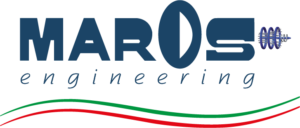Types of pneumatic
VALVES
for industrial automation
Do you already know which type of pneumatic valve best meets the needs of your project?
Maros engineering designs and manufactures different types of pneumatic valves for a wide range of applications in different areas of industrial automation. We specialize in vacuum valves, angle-seated or angle-seat piston valves, with stainless steel or brass bodies, ball valves, butterfly valves, all supplied with integrated pneumatic actuator.
Scroll down the page to discover the main categories of our products and click to see in detail the different solutions available. Remember that in addition to the many types of pneumatic valves in our catalog, we can also make completely customized solutions.
Do you have concerns about different possible alternatives or are you looking for an alternative solution to the valves you have been using so far? Fill out the form at the bottom of the page and explain what you need: our sales engineer team will get back to you as soon as possible.

VACUUM VALVES
PISTON VALVES
COMPACT VALVES
VALVES FOR STEAM CONTROL
RIGHT- ANGLE-SEAT VALVES
ANGLE- SEAT VALVES
BALL VALVES
BUTTERFLY VALVES
DOWNLOAD CATALOGS
CUSTOM VALVES
Types of pneumatic valves
Follow Maros Engineering Industrial Valves on Linkedin to stay updated about case histories and applications
Also check Air operated valves
Ask for further
INFORMATION
Our offering includes numerous types of pneumatic valves for automation systems in a wide range of industries.
If you have already identified which type of pneumatic valve you need, or if you would like an overview of possible alternatives, please fill in the form below to contact our technical department. Briefly describe your case and we will contact you shortly.
